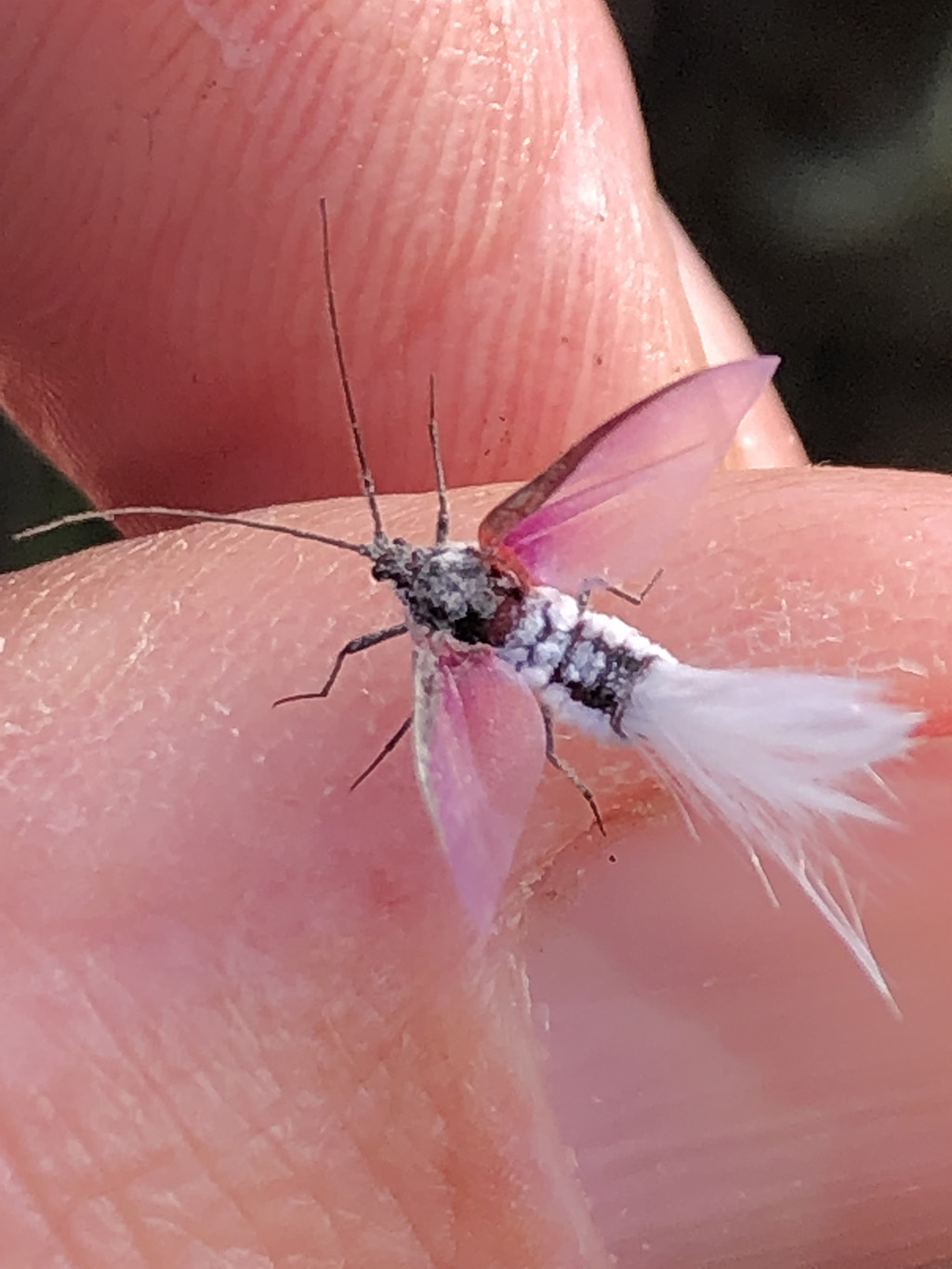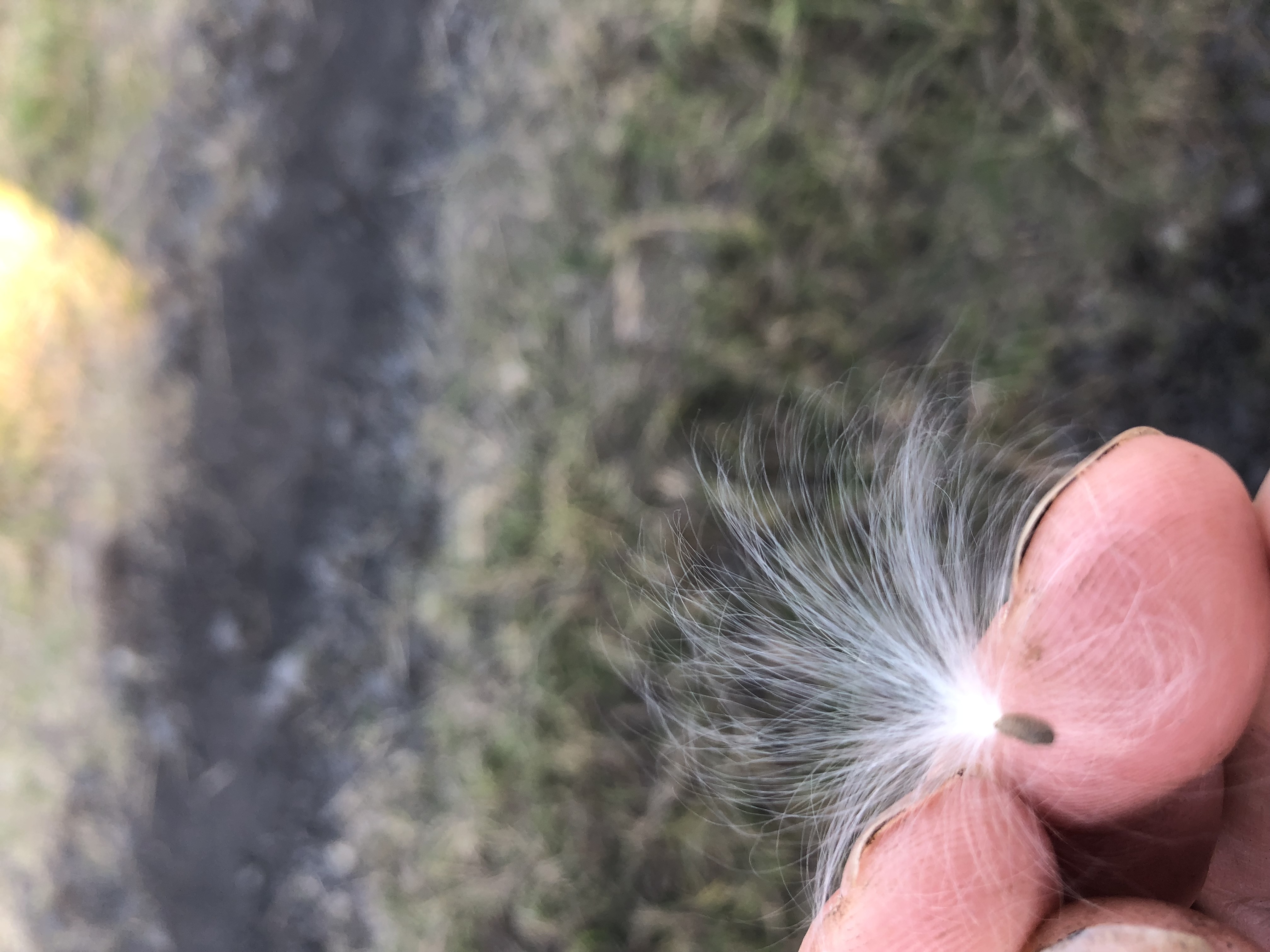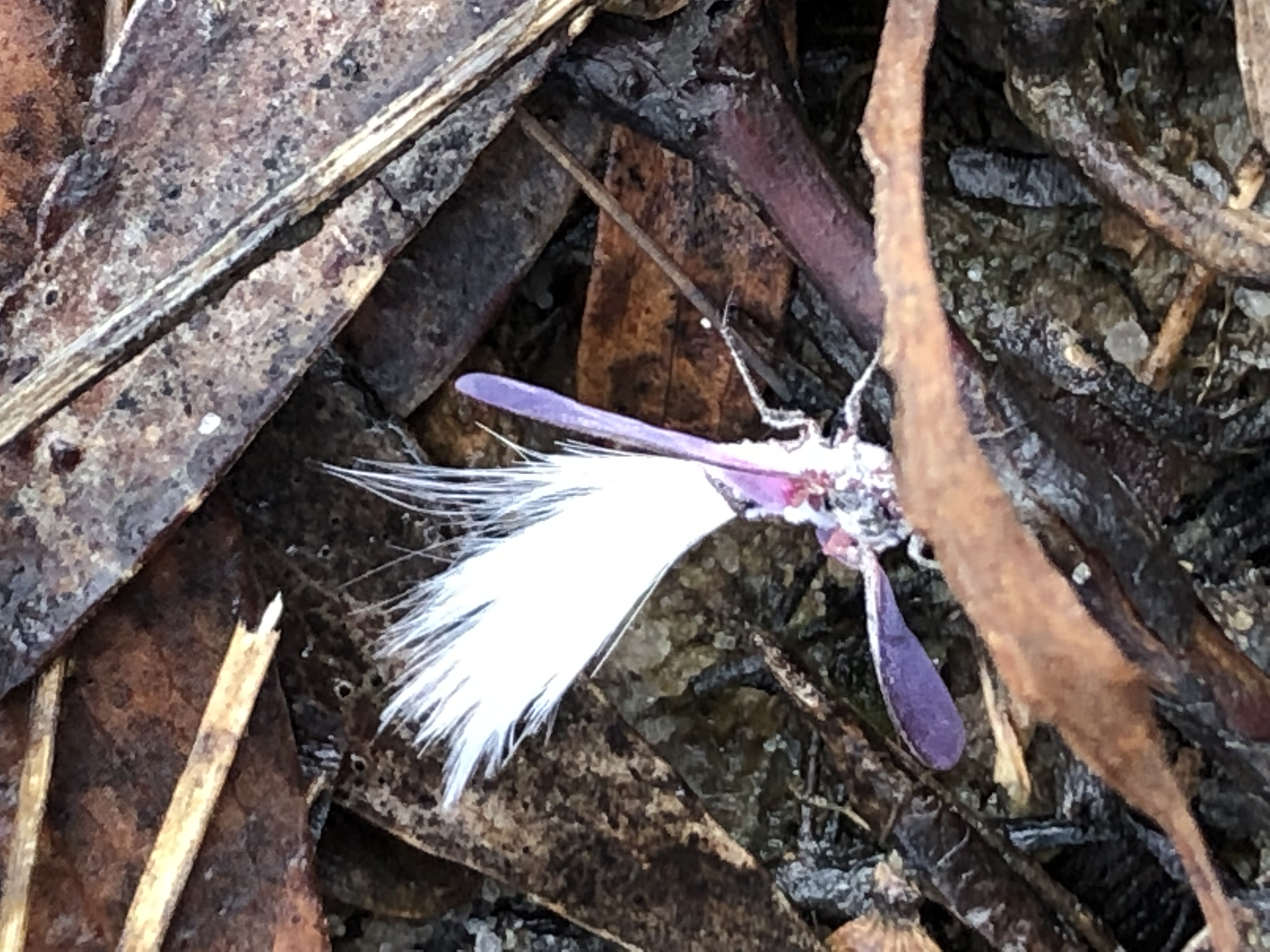
I See Fairies
Peter Dawe

All aspects of life have been different of late; I’ve never spent so much time in front of a screen, which is far from my norm, so I took a necessary screen break and immersed myself in some green. I ventured down the highway to Barren Grounds Nature Reserve and was secretly delighted to see no other cars in the carpark.
I needed a nature reboot and was more than content to just observe the different plant communities of the region. I’d just stepped through a large puddle when I noticed what appeared to be dandelion seeds floating toward me on the breeze. However, there was no breeze, and there are no dandelions deep within this Nature Reserve. Could milkweed seeds have made there way up from the valleys below? Or was it in fact the achenes of Doryphora sassafras which are likely present in the rainforest sections of the reserve, but not in the woodland I was walking through.

Perplexed, I reached up and attempted to catch one of the dozen or more that floated around me, but it changed direction. I held up my hand in the vicinity of one of these tiny floating feathers and as it landed I could see wings and legs. It appeared almost fairy-like with beautiful translucent purple wings and a tuft of vivid white hair extending from its abdomen. A waxy resin was along the sides of its abdomen, which I mistook for modified gills thinking it had just emerged from a nymph stage in the water.
Some landed on trees and some on the ground and they disappeared as quickly and quietly as they had arrived. I’ve been very fortunate to have seen some amazing things in the natural world, but this was quite extraordinary, perhaps more so because I had no idea what I had just witnessed. The best I could do was "insect", but I had absolutely no idea what family or even order they belonged to.
Thankfully Twitter came to the rescue and QuestaGame confirmed. It turned out to be a male giant mealy bug Callipappus sp. (often referred to as a bird-of-paradise fly). The males as seen here are quite small and delicate, whilst the females are up to 4cm long and generally sit immobile on a tree branch.
It’s amazing when we take time out to listen and observe what wonders we can discover.

Peter is the Youth Community Greening Coordinator for the Royal Botanic Garden Sydney